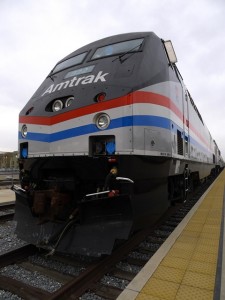 A recent article published in the Miami Herald reflects growing support to form a public-private partnership (P3) to save the national passenger rail system. To some, this statement may sound puzzling, as the national passenger rail system has been controlled by Amtrak, a public-private entity, since 1971. Amtrak, however, is not a public-private partnership, and the national passenger rail system is an ideal subject for explaining what is, and what is not a P3.
A recent article published in the Miami Herald reflects growing support to form a public-private partnership (P3) to save the national passenger rail system. To some, this statement may sound puzzling, as the national passenger rail system has been controlled by Amtrak, a public-private entity, since 1971. Amtrak, however, is not a public-private partnership, and the national passenger rail system is an ideal subject for explaining what is, and what is not a P3.
P3 Misconceptions
A P3 is not a public subsidy for a private operation. That, in a nutshell, is Amtrak. But, contrary to a popular misconception, a public-private partnership is not a “gift” of public dollars to a private entity. In fact, a P3 is much closer to the opposite–a private subsidy of a public operation whereby the private partner provides its technical expertise and access to financing to facilitate the efficient provision of a public good.
In addition, a P3 is not “privatization”—i.e., the outright conveyance of public assets to the private sector. The Herald article referenced above also discusses a proposal to solicit bids for the transfer of certain Amtrak corridors to private rail companies. The sale of a public asset, however, is not a public-private partnership.
Shared Benefits and Risks Under P3s
A P3 is an inherently flexible vehicle, and the possible structures and applications are far too numerous to list. What all P3s have in common, however, is that the public and private partners share both the risks and the benefits of the project. A properly designed P3 will allocate responsibilities to both partners in a way that maximizes their strengths and minimizes their weaknesses, provide a public good in reduced time and at reduced cost to the public, and financially benefit both partners.
So, what will a passenger-rail P3 look like? Time will tell, but several rail-related P3s are currently in the works in South Florida, and the federal government can learn from and adopt any of these structures in determining its ultimate solution. Examples include the planned improvements to the Tri-County commuter and freight railways and All Aboard Florida, a private intercity passenger rail system (the first of its kind in the nation) connecting Miami and Orlando, which will utilize public-private partnerships for certain portions of the project, including station and intermodal-facility development.

